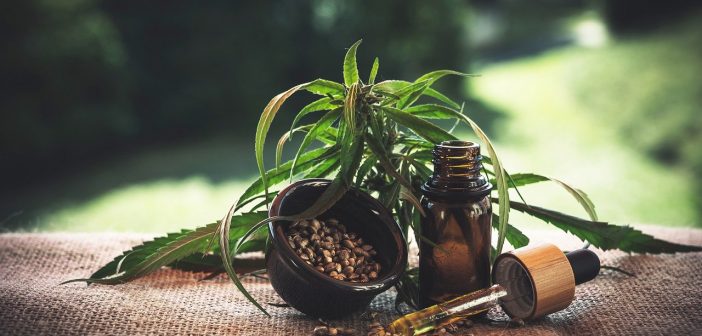In the last decade, many scientists have been able to find treatments and cures for certain diseases that were thought to be incurable. Each day we have more pharmacological resources to control and alleviate symptoms more efficiently. However, physicians and researchers are exploring alternative options that can help alleviate certain ailments. Today, cannabinoids are an uncharted area with potential health benefits in medical science.
What are Cannabinoids?
Cannabinoids are active substances that belong to the terpene phenolic group. Chemically speaking, they have a 21-carbon structure and are found in specific plants naturally. Nonetheless, their importance centers on the probable use in health care as an alternative treatment for certain health conditions. There are three types of cannabinoids: synthetic, phytocannabinoids, and endocannabinoids. They all differ from where they can be obtained.
What are Synthetic Cannabinoids?
Synthetic cannabinoids are artificially-made compounds that are able to produce neurological effects on humans and animals. They are a new group of psychoactive drugs created initially for research purposes to understand the mechanisms and functions of natural versions. People know them as liquid or herbal essences because they can smoke them on dried plant materials or vaporize and inhale them. However, some of these are used for clinical and recreational purposes. There are legal restrictions regarding their use in many countries.
What are Phytocannabinoids?
Phytocannabinoids are plant-based substances that have similar structures and functions as cannabinoids in general. However, they are produced naturally by plants. Marijuana (Cannabis sativa) and hemp are the most known plant sources of these compounds. Still, other vegetables and plants do contain, but in minuscule quantities.
The Endocannabinoid System
The endocannabinoid system is an intercellular communication scheme composed of endocannabinoids, their receptors, and enzymes that regulate the production and degradation of these. While phytocannabinoids derived from plants, our body can produce these compounds naturally, hence their name, endocannabinoids.
These compounds help maintain a balance in our body and modulate certain functions of our nervous system. Anandamide and 2-AG are the most known and studied endocannabinoids.
How does this work? When our body releases these substances, they circulate through our bloodstream and reach target tissues, such as our brain, spinal cord, and peripheric nerves. Here, they attach to specific sites known as cannabinoid receptors. There are two types of receptors: CB1 and CB2. CB1 receptors are located mainly in our nervous system, while CB2 receptors are distributed in the rest of the body.
Think of them as keys and keyholes. The endocannabinoids bind to the receptors and unlock them to produce different physiological effects on our organism. These effects range from regulating neurotransmitter release, modulating pain perception, and influencing cardiovascular, digestive, and liver functions. Nonetheless, both synthetic and phytocannabinoids can bind to these receptors and cause the same effects as the endocannabinoids.
Where Can They be Found?
As said previously, synthetic cannabinoids are made in laboratories, while our body produces endocannabinoids. However, phytocannabinoids are extracted from plant sources. The plants that contain the highest concentrations of phytocannabinoids are marijuana and hemp.
Cannabidiol (CBD) is one of the most known cannabinoids due to its potential therapeutical value, and it is legal for purchase (as an oil or creams) in many countries, like Canada and certain regions of the United States. You can buy CBD products from here.
Further investigations have found other cannabinoid-like compounds in different kinds of vegetables, like cloves and black pepper.
For example, broccoli, cauliflower, Brussels sprouts, and cabbage contain a compound called Diindolylmethane, that attaches to CB2 receptors.
Certain herbs, like Echinacea and Kava plant, also contain certain phytocannabinoids that may have negative effects on our body.
List of Major Cannabinoids and their Effects
How many cannabinoids are there? The cannabis plant contains more than 113 known phytocannabinoids that may have many health benefits and could treat many health hazards. However, researchers are focusing on the following compounds:
Tetrahydrocannabinol (THC): It can be found in marijuana concentrations of up to 30 to 40% as one of the main psychoactive compounds. It can alter the state of consciousness, change the user’s perceptions, and affect short-term memory. Even more, it can stimulate appetite, reduce coordination and cause mood swings. Some people experience paranoia, anxiety, and panic attacks.
However, evidence has demonstrated that it can have some clinical uses, such as pain reduction, decrease nausea and vomiting, and has antioxidant and anti-inflammatory properties. Currently, a study revealed that it could be used in Tourette’s Syndrome due to its potential effect in reducing spastic movements.
Cannabidiol (CBD): It is another cannabinoid extracted from marijuana. However, it has no psychoactive properties. Cannabidiol can decrease the effects of THC. Because of this, scientists are evaluating their therapeutical advantages. Up to date, evidence shows that it can be used to decrease inflammation, relieve muscle spasms, alleviate certain psychotic disorders, and reduce epileptic seizures. Additionally, it has antioxidant capabilities.
CBD is commercialized as oil and topical presentations (lotions, creams, and ointments) in certain parts of the world. Since it has no psychoactive effects, it is legal for possession and purchase as long as it has a concentration of 0.3%.
Cannabinol (CBN): It is a metabolite produced from the THC; therefore, it is not actually present in cannabis. CBN has low psychoactivity, but its primary effect focuses on reducing sleeping disorders, such as insomnia and sleep apnea. Many studies theorize that it could be used as a natural sedative.
Other studies have shown the following effects:
- Antiemetic effect
- Reduces pain
- promotes bone regeneration
- Anticonvulsant property (probable health benefit in Parkinson’s disease, epilepsy, and multiple sclerosis)
- Reduced intraocular pressure
- Treat burns and skin conditions, like psoriasis.
Cannabichromene (CBC): This Cannabinoid received recent recognition because it has more potent anti-depressive and anti-inflammatory properties than CBD. However, it still has psychoactive effects like THC. CBD could also be used as a neuroprotective compound, treat bacterial and fungus infections, and reduce acne.
Cannabigerol (CBG): The majority of the phytocannabinoids that are contained in cannabis originate from cannabigerol as it is broken down and transformed into THC, CBD, CBC, and many more. CBG is not widely studied like Cannabinoid, but it has no psychoactive effect. Certain investigations have shown evidence that it could help to treat certain conditions:
- Glaucoma
- Cancer
- Anxiety
- Huntington’s disease
- Multiple Sclerosis
- Severe bacterial infections
Other Cannabinoids: 2-arachidonoylglycerol (2-AG), tetrahydrocannabivarin (THCV), and cannabidivarin (CBV) are other phytocannabinoids that are recent phases of investigation that show promising clinical uses.
Difference Between Cannabinoids
These substances have similar molecular structures, but their true difference centers on their psychoactive property. Unfortunately, cannabidiol and cannabigerol are the only components investigated with no psychoactive properties. Therefore, the use of THC, CBN, and CBC is limited to probable therapeutical purposes.
However, further advances in technology could be able to eliminate this effect or counteract it and use them as alternative treatments.
Health and Safety
Despite the potential properties of these compounds, no reported death has been declared because of their use. When smoked, these substances produce short-term effects that last from 2 to 4 hours. Oral ingestion can cause effects up to 6 hours after drinking it. It is known that psychological effects, such as anxiety, euphoria, and paranoia, are documented as potential side effects. Still, apart from that, they are relatively safe. Research does not reveal long-term effects on health.
Conclusion
Although cannabinoids carry in properties, uses, and benefits, all of them offer the chance to potentially treat certain health afflictions, reduce pain, control anxiety, and many more, without the use of custom medications. Alternative treatment is gaining prominence and you should be considered in certain situations. However, it is best to seek professional help before selecting these options.
The views and opinions expressed in this article are those of the authors and do not necessarily reflect the policy or position of Kolabtree. This content is not intended to be a substitute for professional medical advice, diagnosis, or treatment. Always seek the advice of your physician or other qualified health provider with any questions you may have regarding a medical condition.







